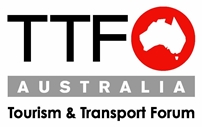
Melbourne’s surging workforce drives public transport boom
Melbourne’s strong population growth and booming economy have seen an increase in the number of residents catching public transport, according to a new report released by the Tourism & Transport Forum Australia (TTF) and L.E.K. Consulting.
The TTF-L.E.K. Consulting Public Transport Barometer provides up-to-date insights into the performance of major metropolitan public transport networks in Australia and tracks just how many Australians are choosing to take public transport in their day-to-day lives.
TTF CEO Margy Osmond said the report has found that Melbourne’s ongoing investment in its public transport network continues to see more people each year leave the car at home and get on the bus, train or tram.
“In 2017, Melbourne residents took 237 million rail trips and 204 million light rail trips, with an increasing spike in morning and afternoon peaks due to employment growth,” Ms Osmond said.
“While there were 118 million bus trips, getting on the bus was found to be a less popular option, which is partly because of increasing congestion levels and the popularity of the tram system bolstered by recent government promotional efforts.
“While Melbourne remains behind Sydney in terms of number of people using public transport, the year on year growth of people catching trains and light rail continues to eclipse other capital cities such as Perth and Brisbane.”
L.E.K. Consulting Senior Partner, Simon Barrett, said this edition of the Transport Barometer focused on rising congestion levels in Australia’s capital cities and the subsequent impact on public transportation.
“What this report has found is that Melbourne is one of the most congested cities in the world, ranking within the top 60 in the global congestion rankings,” Mr Barrett said.
“The congestion choking Melbourne adds an additional 34 minutes on to the daily commute of the average Melbourne resident – or a staggering 130 hours a year.
“Increasing congestion levels in Australia are estimated to cost $16.5 billion to metropolitan cities – $6 billion in private time costs, $8 billion in business time costs, $1.5 billion in extra vehicle operating costs and $1 billion in additional air pollution costs.
“These are avoidable costs, and while there is a long way to go the Victorian Government must be commended for the investment its recent State Budget towards delivering the services and infrastructure Victoria needs to retain its mantle as the world’s most liveable city, including $2.2 billion to upgrade and widen some of Victoria’s most congested suburban roads and $1.9 billion to rebuild the State’s public transport network.”
